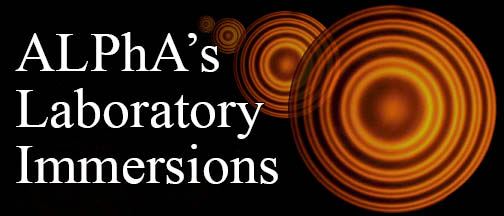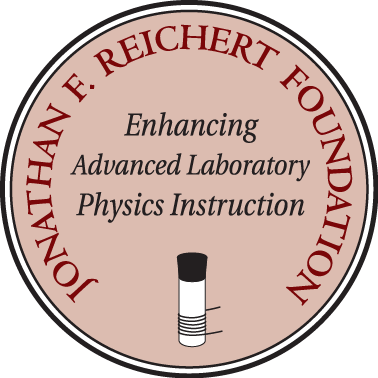- Home
- What We Do
- Laboratory Immersions
- Immersions 2025
- Imm2025Chicago_DropPinchoff
In this Immersion participants will learn how to use a high speed camera, and free open source image analysis software to study the dynamics of the drop pinch process. Water dripping from a faucet is something which we have all seen. Yet this apparently simple process is rich in possibilities for introducing students to a wide range of subjects such as; fluid dynamics, non-equilibrium systems, scaling laws, dimensional analysis, singularities and basic principles of photography (of the non cell phone variety). Experiments can be designed for undergraduate students with no formal background in fluid dynamics as an introduction to the subject which is the approach we use. It is also suitable for more quantitative use as part of an undergraduate or graduate fluid dynamics course.

Pedagogically we use this experiment as an example of how to approach studying a complex phenomena for which you have no rigorous theoretical background. You are instead trying to gain insight into what dominant physical processes are likely driving the observed behavior as a way of informing further theoretical development. A strong emphasis is placed on observing the behavior of the drops, and making connections between features which the eye notices and power law trends which appear in the data. For this reason we require students to analyse their videos frame by frame using tools in ImageJ for measuring distances in pixels. We intentionally do not provide edge detection algorithms or any other automated processing tools for image analysis because doing divorces their attention from observing and understanding what is happening.

The apparatus shown above, which is capable of recording videos at frame rates of up to 40k fps, can be put together for as little as $5000. This is the apparatus we use for the study of solutions of water and mixtures of water and glycerine. Pretty much any Windows or Mac computer can run the image analysis software which is the free, open source package ImageJ.
The main costs associated with the experiment are:
● Chronos 1.4 High Speed Camera. Cost ~$4500.
● A good quality macro lens, preferably with a focal length of ~100mm and a maximum aperture of f2.8. These can be found used for as little as $200, and are available new for $500.
● Other components such as a light source, glass beakers, syringe, etc. are all low cost and commonly found in the typical physics instructional lab.
Participants will:
● Gain experience working with the Chronos high speed camera to record video of the drop pinch off process.
● Learn how to use ImageJ to make measurements of the radius of the neck of the drop.
● Learn how to apply some simple elements of dimensional analysis to this very complex process to predict possible power law regimes which could be present through various parts of the process, and which provide insight into the dominant physical processes which are driving the observed behavior.
● Learn how to identify and measure the minimum neck radius of the drop as a function of time from the moment of pinch-off, and to identify different power law regimes.
● Spend plenty of time discussing the problem of how to break students from the habit of viewing experimental physics as being all about getting the right numbers and matching theory and instead get them observing and exploring a phenomena and asking questions such as “what am I seeing?”, “why does it do that?”, “do my numbers make sense based on what I see?”.
Participants should bring a laptop computer to use for image analysis and making plots of the data. The program, now called FiJi, can be downloaded from https://imagej.net/software/fiji/downloads. All other materials will be provided.
Host and Mentor:
 Mark Chantell:
Mark Chantell:
I am the director of the physics instructional labs at the University of Chicago. I came to UChicago after graduate school as a post-doc in high energy gamma ray astrophysics. Three years of research taught me that I much prefer the educational side of academia and so I transitioned to a position in the teaching labs, where I have remained for the last 27 years. My passion has become trying to find ways to get students to “see” physics as something more than equations and numbers. To open their eyes to seeing interesting things in the world around us, wondering why they behave the way they do, and using that as a basis for scientific investigation for the purpose of gaining insight into something we previously did not understand.
Please note that the Jonathan F. Reichert Foundation has established a grant program
to help purchase apparatus used in Laboratory Immersions. Limitations
and exclusions apply, but generally speaking the Foundation may support
up to 50% of the cost of the required equipment.




